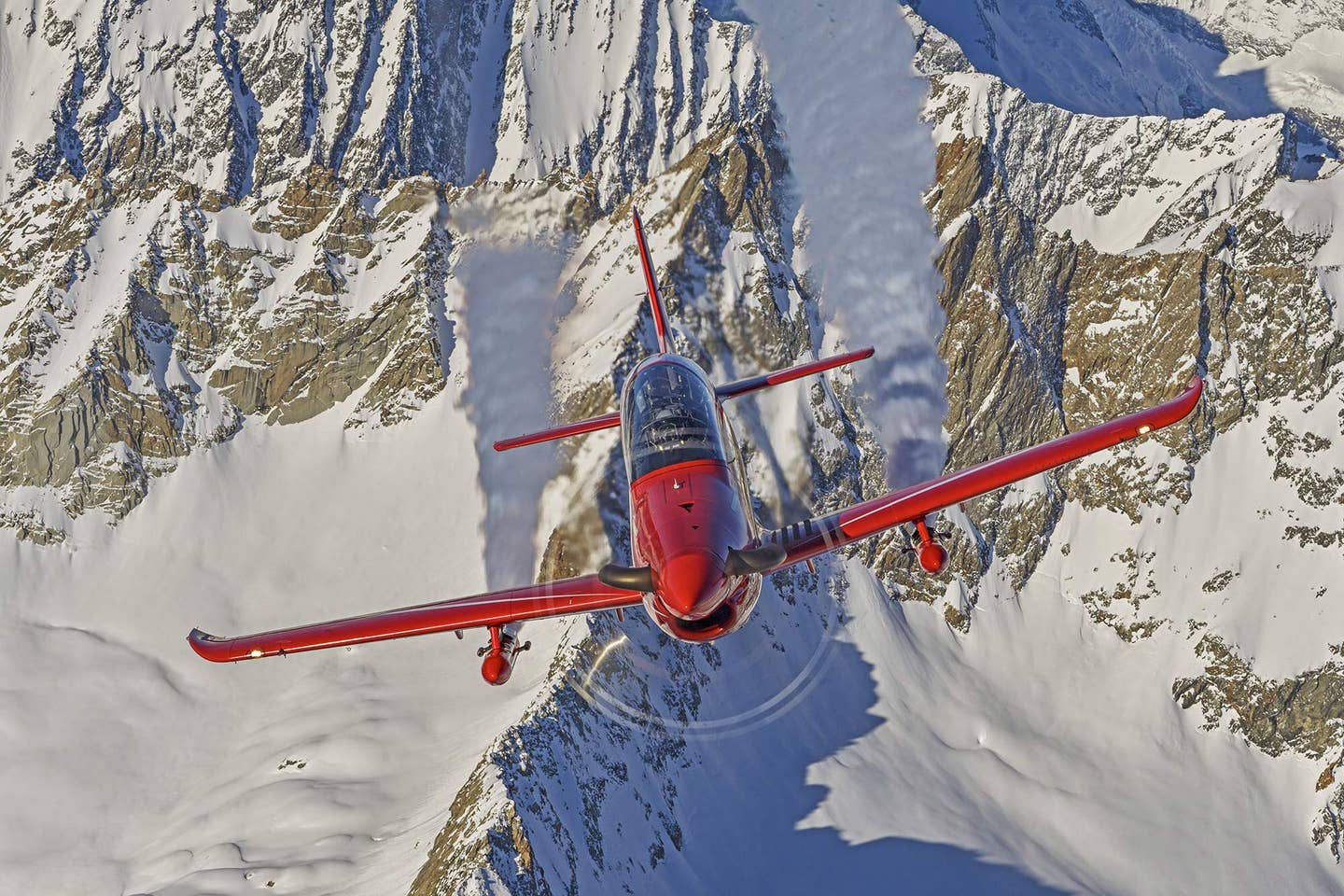
The Pilatus PC-12 next-generation trainer in flight. Pilatus
After a “long and extremely professional evaluation” by Spain’s Ministry of Defense to select a training system for the country’s future military pilots, the Spanish Air Force chose the Swiss-produced Pilatus PC-21 training system, and has committed to receiving a total of 24 PC-21s to replace the Casa C-101 jet trainers they have used since 1980.
The contract, worth more than €200 million, was signed with the Spanish Dirección General de Armamento y Material (DGAM) and comprises of an integrated training system, including simulators developed and produced by Pilatus, spare parts and logistics support in addition to 24 single-engine turboprop PC-21 trainer aircraft. With the order, Pilatus has now sold 235 PC-21s to nine air forces since 2006, including Singapore, Switzerland, the United Arab Emirates, France, and Australia.
Oscar J. Schwenk, chairman of Pilatus, is enthusiastic about this major order from Spain. “As a small Swiss aircraft manufacturer, I’m delighted at our repeated success in winning over large, international competitors. This result is proof that, with our PC-21, we can deliver the very best training system in the world. I’m delighted to see us add a new air force to our existing customer portfolio.”
The Pilatus PC-21 combines both ground-based equipment and the versatile PC-21 aircraft into one training system designed to lower overall costs for today’s stretched military budgets. By designing the PC-21 to be easy to fly for both the ab-initio (zero time) student and experienced pilots, Pilatus said the cost to train a military pilot can be reduced by more than 50 percent, in part because the PC-21 requires much less fuel than comparative jet trainers. “The capabilities of the PC-21 make it ideally suited to a very wide training envelope. It can be used from day one, eliminating the need for an elementary flying training fleet and also bridging the performance gap between traditional turboprop trainers and expensive lead-in fighters. In this respect, the PC-21 provides significant advantages over traditional turboprops and jet trainers,” the company said.
The PC-21 delivers a maximum cruise speed of 337 KTAS and a maximum climb rate of 4,091 ft/min behind a 1,600 shp Pratt & Whitney PT6A-68B engine and scimitar five-blade graphite propeller. It is G loaded to + 8.0 g | - 4.0 g, can reach 10,000 feet in two minutes, 35 seconds, and has a roll rate of 200 degrees per second.
Another way the PC-21 reduces costs to air forces, says Pilatus, is the aircraft’s embedded radar simulation and integral datalink system allow the teaching of radar techniques and simulated weapons deployment against computer-generated targets and real aircraft. The PC-21 can simulate almost any weapon found on the latest generation of fighter aircraft, allowing realistic tactical training that can be carried out without the extra costs associated with practice weapons and air-to-ground weapons ranges. “Using the radar simulation,” the company said, “beyond-visual-range missile employment can be taught without the need for other aircraft as an airborne target, making the system more cost-effective. Radar-to-visual intercepts and multiple target engagements can also be conducted with any similarly-equipped aircraft. For air-to-ground training, the PC-21 provides various weapon modes such as continuously-computed release point and continuously-computed impact point delivery modes, a synthetic air-to-ground radar and a ‘no-drop’ bomb scoring system.”

Sign-up for newsletters & special offers!
Get the latest FLYING stories & special offers delivered directly to your inbox






